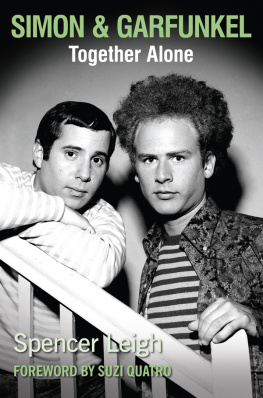First published in Great Britain in 2018 by
Policy Press University of Bristol 1-9 Old Park Hill Bristol BS2 8BB UK Tel +44 (0)117 954 5940 e-mail
North American office: Policy Press c/o The University of Chicago Press 1427 East 60th Street Chicago, IL 60637, USA t: +1 773 702 7700 f: +1 773-702-9756 e:
Policy Press 2018
British Library Cataloguing in Publication Data
A catalogue record for this book is available from the British Library
Library of Congress Cataloging-in-Publication Data
A catalog record for this book has been requested
ISBN 978-1-4473-3280-0 paperback
ISBN 978-1-4473-3279-4 hardcover
ISBN 978-1-4473-3282-4 ePub
ISBN 978-1-4473-3283-1 Mobi
ISBN 978-1-4473-3281-7 ePdf
The right of Jadwiga Leigh and Jane Laing to be identified as authors of this work has been asserted by them in accordance with the Copyright, Designs and Patents Act 1988.
All rights reserved: no part of this publication may be reproduced, stored in a retrieval system, or transmitted in any form or by any means, electronic, mechanical, photocopying, recording, or otherwise without the prior permission of Policy Press.
The statements and opinions contained within this publication are solely those of the authors and not of the University of Bristol or Policy Press. The University of Bristol and Policy Press disclaim responsibility for any injury to persons or property resulting from any material published in this publication.
Policy Press works to counter discrimination on grounds of gender, race, disability, age and sexuality.
Cover design by Andrew Corbett
Front cover image: www.alamy.com
Readers Guide
This book has been optimised for PDA.
Tables may have been presented to accommodate this devices limitations.
Image presentation is limited by this devices limitations.
Affect, emotion and object relations: affect is the experience of feeling or emotion. Emotion is an affective state characterised by intense mental activity and a high degree of pleasure or displeasure. An affect is different to an emotion because it is something that is produced by the body, or the mind, when an interaction has occurred with another body or mind. This interaction subsequently increases or diminishes the bodys power of activity. Object relations theory is a psychoanalytic theory that emphasises the dynamics of interpersonal relations (see Chapter 4).
Attachment theory: states that a strong emotional and physical attachment, or bond, to at least one primary caregiver is critical to personal development. John Bowlby first coined the term as a result of his studies involving the developmental psychology of children from various backgrounds. Research also indicates that attachments are developed over time and affect the emotional state and behaviour of adults as well as children (see Chapter 6).
Dramaturgy: developed by Erving Goffman, the dramaturgical approach makes us realise how when we act, we worry about our audience and how they will judge our performance to see if we will slip up and show how we really act behind the scenes (see Chapter 2).
Internal working model: the childs attachment relationship with their primary caregiver leads to the development of an internal working model. This is a cognitive framework comprising mental representations for understanding the world, self and others. A persons interaction with others is guided by memories and expectations from their internal model that influence and help evaluate their contact with others (see Chapter 8).
Management theory: addresses how managers and supervisors relate to their organisations and its objectives. It also seeks to explore how the implementation of effective methods can accomplish ideal goals as well as how employees can be motivated to perform to the highest standard (see Chapter 3).
Managing risk: In child protection social work, managing risk is an integral part of practice and often involves completing, or considering, risk. Risk assessments involve understanding the likelihood of beneficial and harmful outcomes occurring within a particular timescale. Despite pressure on social workers to adopt defensive risk management, considering and acting on all forms of risk, it is widely recognised that it is impossible to eliminate risk (see Chapter 5).
Motivational Interviewing: refers to a counselling approach developed in part by clinical psychologists William R. Miller and Stephen Rollnick. The main goals are to engage clients, elicit change talk (where the client articulates their own rationale for behaviour change) and evoke motivation to make positive changes for the client (see Chapter 7).
Performativity: the terms performativity and performance derive from the verb to perform. They define how an action is executed. In this context, it refers to what the audience experiences as well as the actors involved in the action directly (see Chapter 2).
Person-centred approach (to care): an approach that developed from the work of the psychologist Dr Carl Rogers (19021987). It is a way of thinking and doing things that sees the people using health and social services as equal partners in planning, developing and monitoring care to make sure it meets their needs (see Chapter 1).
Professionalisation: a social process by which an occupation transforms itself into a profession so that it can attain the highest form of integrity and competence. Professionalisation tends to result once the professional has established acceptable qualifications, and is deemed to be able to practice and oversee the conduct of members of the profession (see Chapter 2).
Single- and double-loop learning: according to Chris Argyris (psychologist) and Donald Schn (philosopher), single- and double-loop learning is required so that the organisation and its employees will improve their understanding of the cause of problems and the effective way of solving them. Single-loop learning involves the detection and correction of error. This normally occurs when something goes wrong and people look for another strategy. However, double-loop learning is an alternative response and involves people questioning and subjecting the governing variables to critical scrutiny. This form of learning may then lead to a shift in the way in which future strategies and consequences are framed (see Chapter 3).
Symbolic interactionism: a sociological perspective that developed from the American philosophy of pragmatism and particularly from the work of George Herbert Mead. It is the view of social behaviour that emphasises linguistic or gestural communication and its subjective understanding, especially the role of language in the formation of a social being (see Chapter 1).
Systems theory: premised on the idea that an effective system is based on the individual needs, rewards, expectations and attributes of the people living in the system. The theory is designed on the structures, and sub-systems, that surround a service user, for example, the family, organisations and institutions to which that service user belongs. The theory also recognises that any change in one part of the system tends to have repercussions for the other parts (see Chapter 1).













